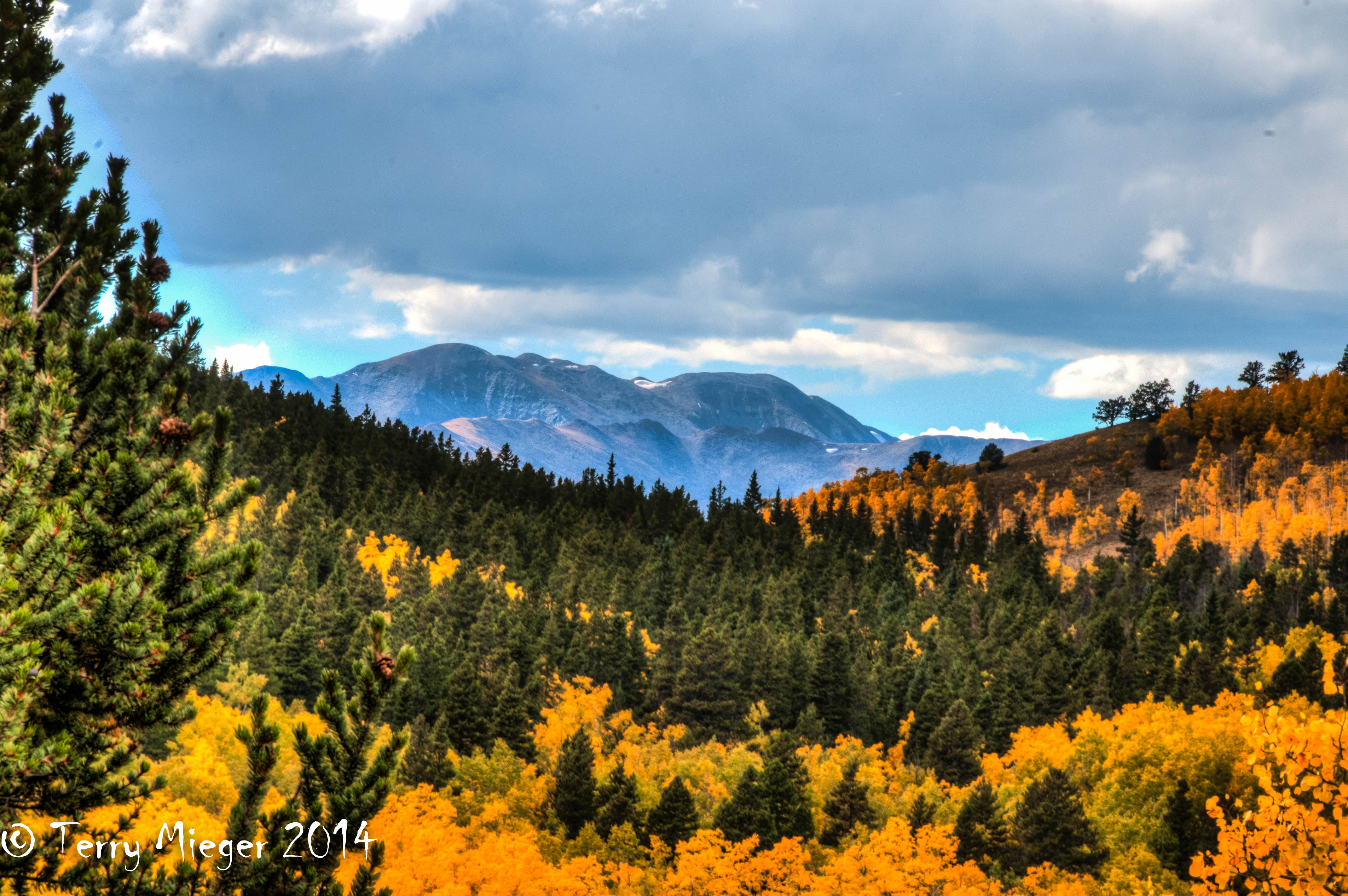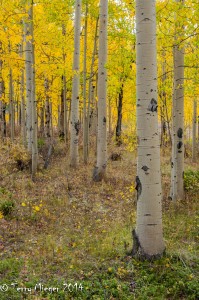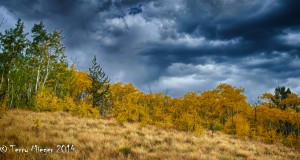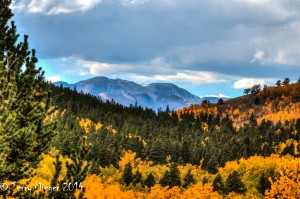I hate to say it but the older I get the faster life goes by. This summer set a new record. In Colorado, we had a wet summer. I’ll bet I didn’t turn the sprinkler system on 5 times. This is so unusual of us- after all we are a semi-arid state. So it seems fall has come early and it is again time for the obligatory trip to the aspens. Not Aspen, I wish it were, their aspens are amazing but that’s a 4 hour drive and would involve at least one overnight. Not in these cards…this year. Hum…a shot of the aspens around the Maroon Bells with maybe a little snow? Not now. So, how do I optimize my fall shooting, taking into consideration time and general laziness. First let’s get up early, about 5 am. It takes about an hour to get to Guanella Pass above Georgetown and there is always a chance to see Bighorns there. But…they’re will probably be blasting the new tunnels at Idaho Springs and that means traffic congestion and delays. The color was not the best on the pass last year.
How about Kenosha Pass and the Colorado Trail? It’s about an hour down US-285 toward Fairplay, aka. South Park 8-}. We could get there during the “Golden Hour” easily and be parked before everyone else shows up after 10 am. That’s the place to go this year.
Equipment: I just spent a bunch on a new polarizing filter for the 18 mm-200 mm lens. Perfect!
Polarizers darken the sky and intensify colors with the expense of decreasing the amount of light to the sensor and the effect can be subtle and their value is debated with the software now used. I prefer getting the effect in the camera if I can. The 18 mm-200 mm is about perfect for this, I don’t like too wide of and angle, The combination of this with the APS (DX) sensor with its inherent 50% magnification should work well. A tripod, I plan on exposure bracketing for HDR, panoramas and maybe Focus Stacking. HDR and high saturation sells at the present time as much as I dislike the extremes, it gives me great choices in processing. Hope the wind is not blowing. Don’t need “quaking aspen”. Let’s go!
Setup the tripod for great adaptability, it’s required for the best sharpness and composition. Choose a tripod that is light enough to carry, easy to set up and sturdy in a breeze. Cable release? There are ways around it but it makes life easier. Adjusting the polarizer can be fun. Generally they work better early or late, not at high noon. The Golden Hours? Try using manual exposer. This is a great time to practice because you usually have plenty of setup time and it is easy to see the exposure change with turning the polarizer for best effect. Use the aperture to get desired depth of field and hyper-focus 1/3 into the distance. Shutter speed can be a problem in the wind. Good luck and take the time to experiment remember it’s all in the practice. Maybe I’ll task about panoramas next week.
Look for color and patterns. 1/15 sec, f/19 for DoF, 44 mm, ISO 400
An HDR shot of 7 individual images variable shutter speed, f/22, 22 mm, ISO 200
An HDR shot of 7 individual images variable shutter speed, f/19, 18 mm, ISO 200
An HDR shot of 7 individual images variable shutter speed, f/27, 15o mm, ISO 200













